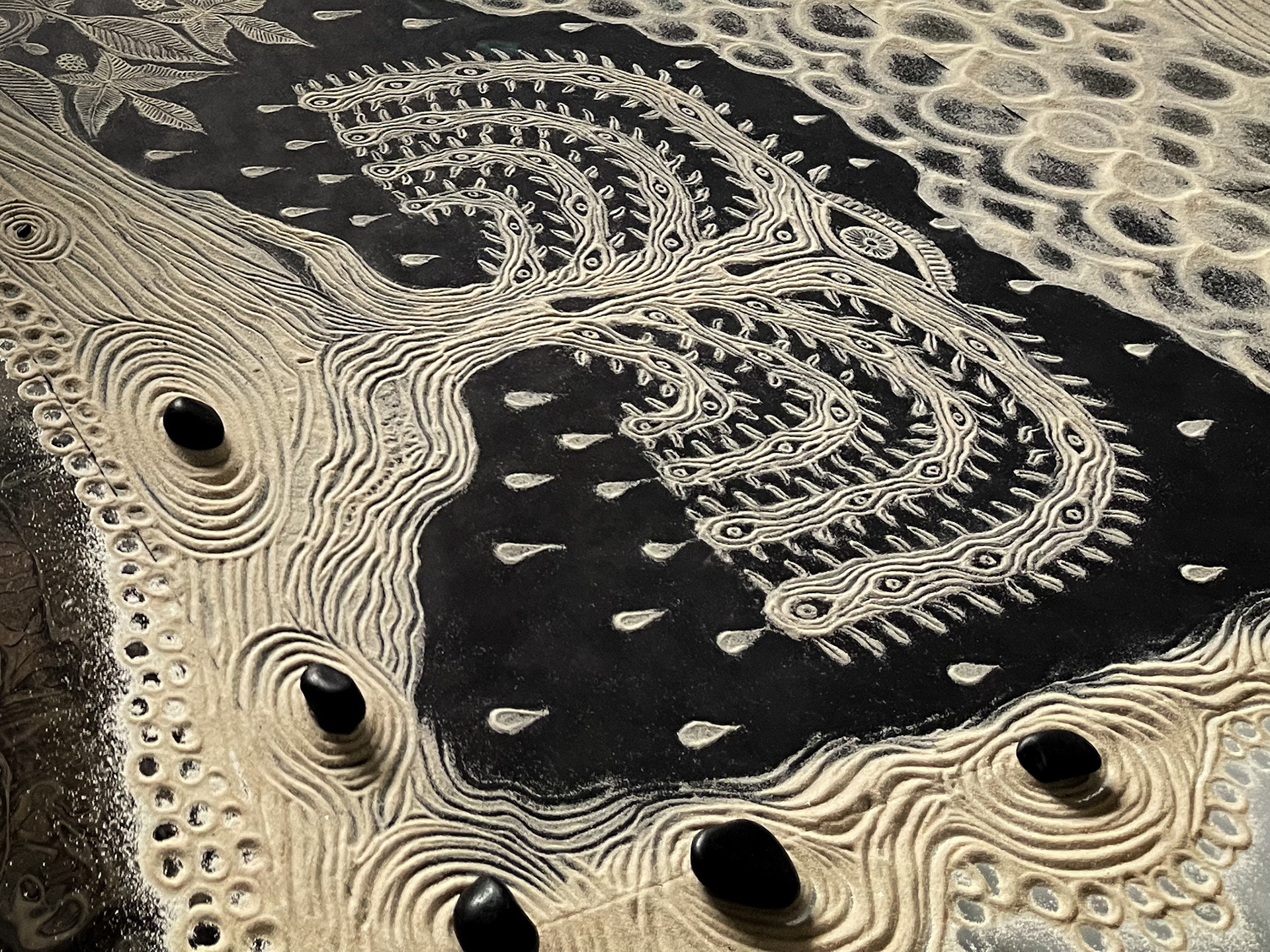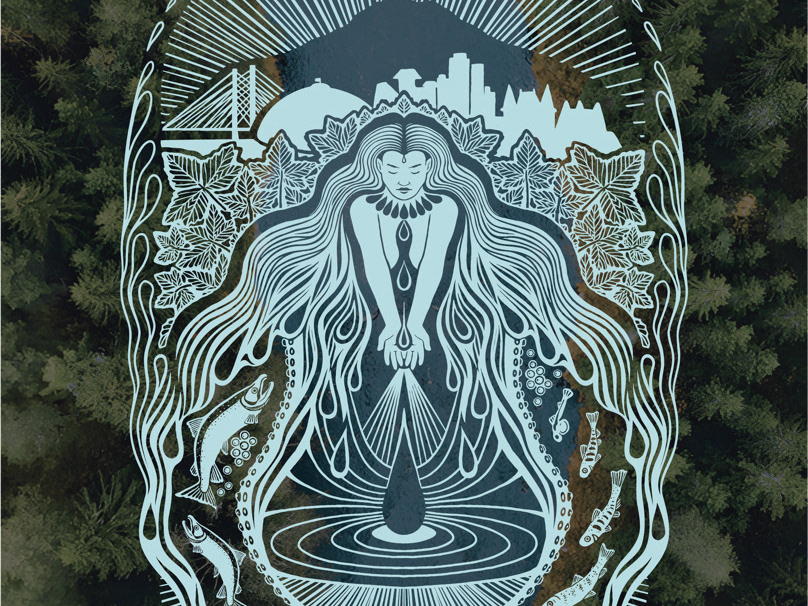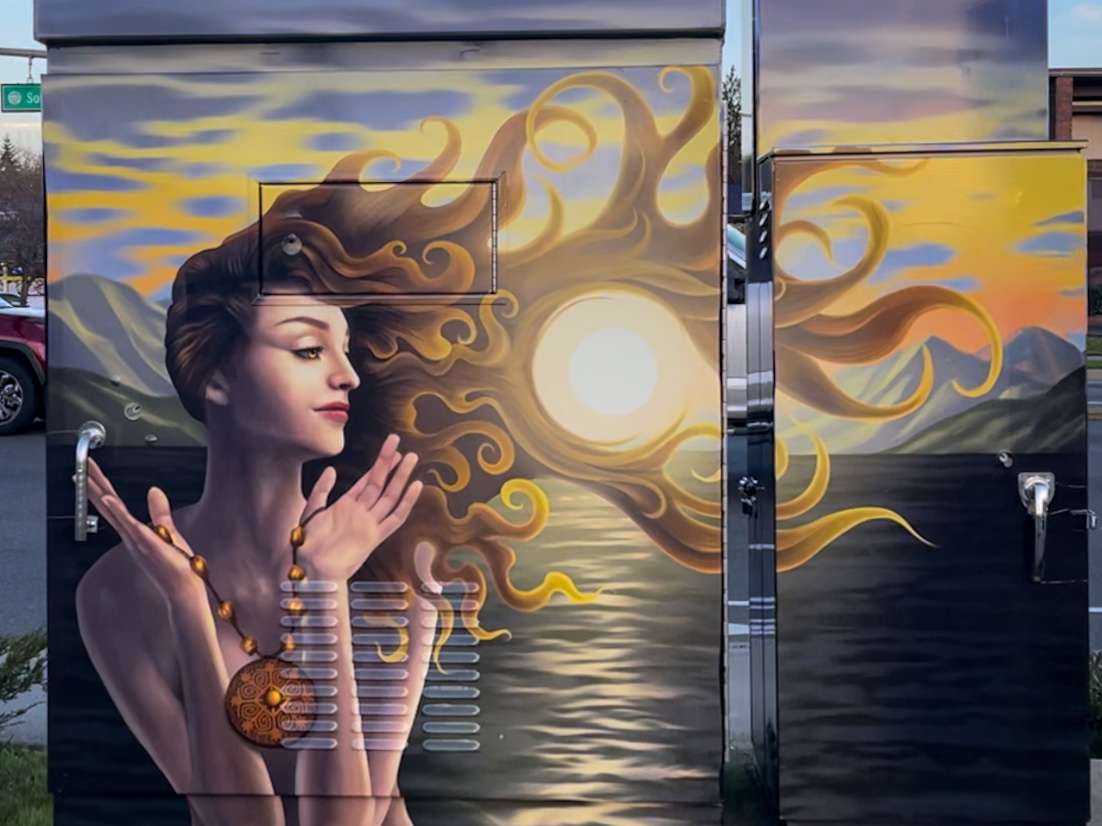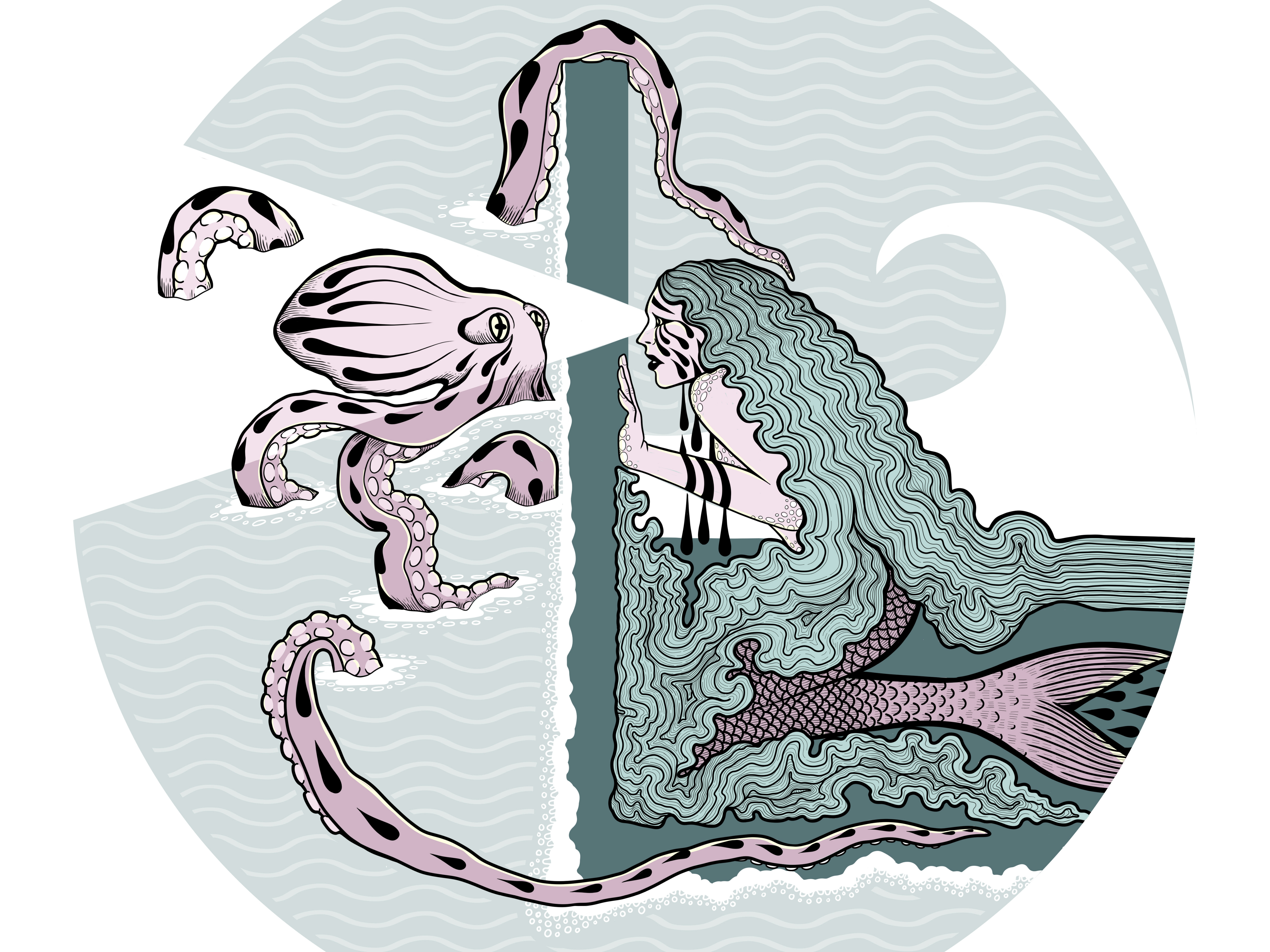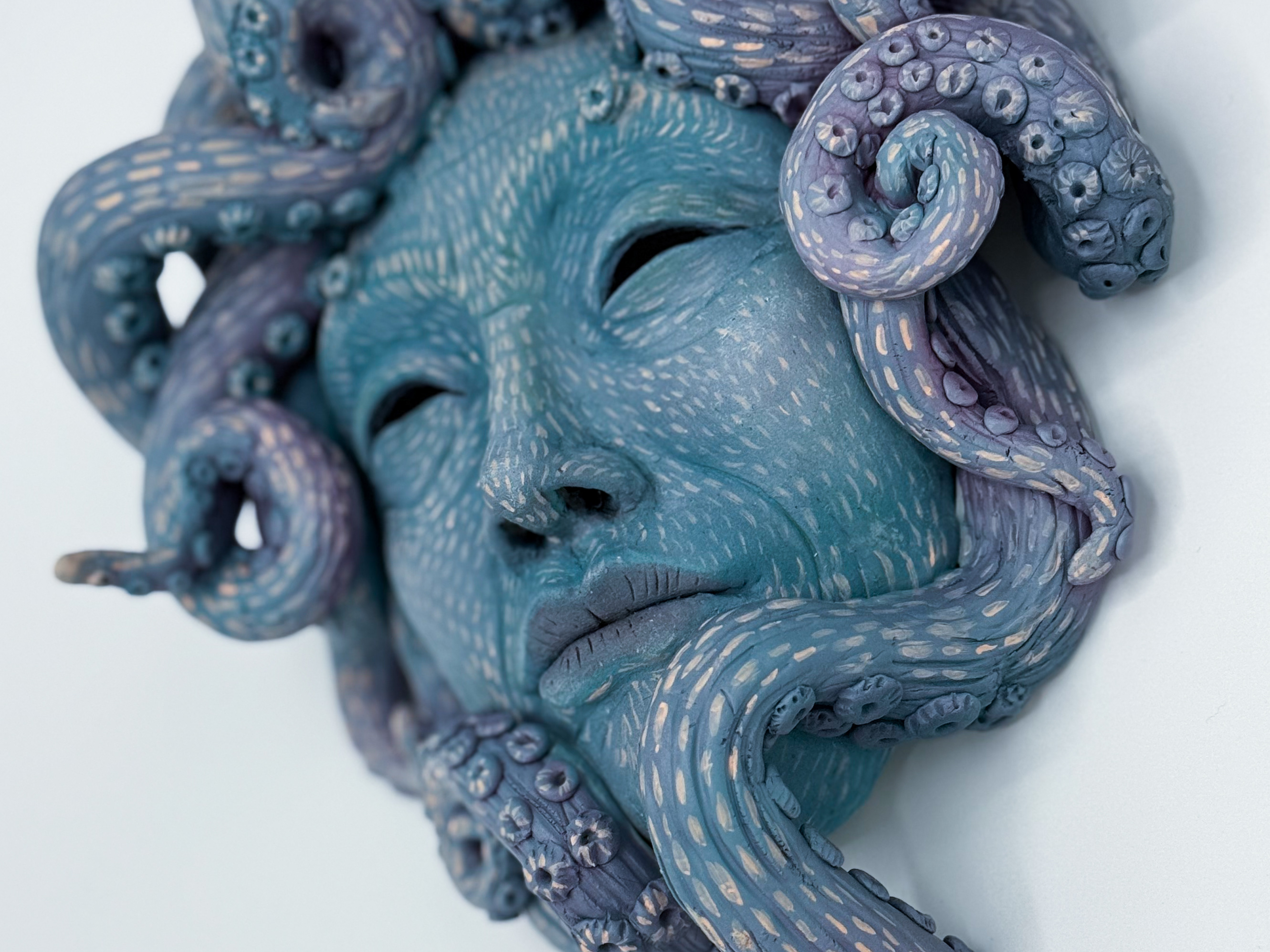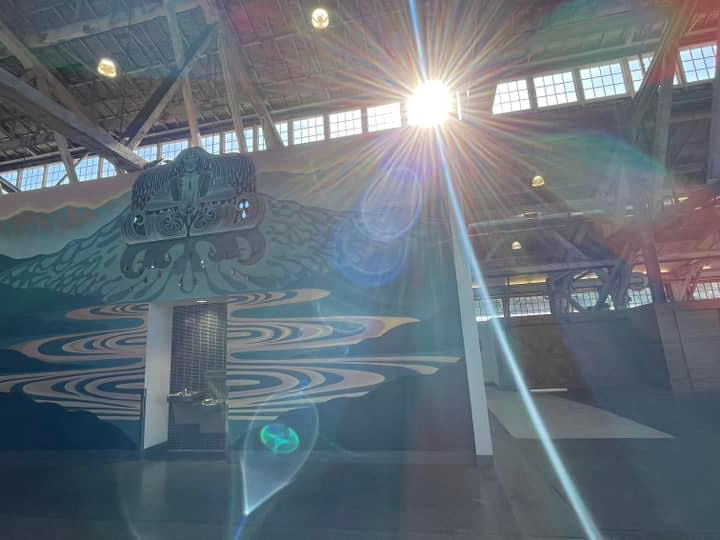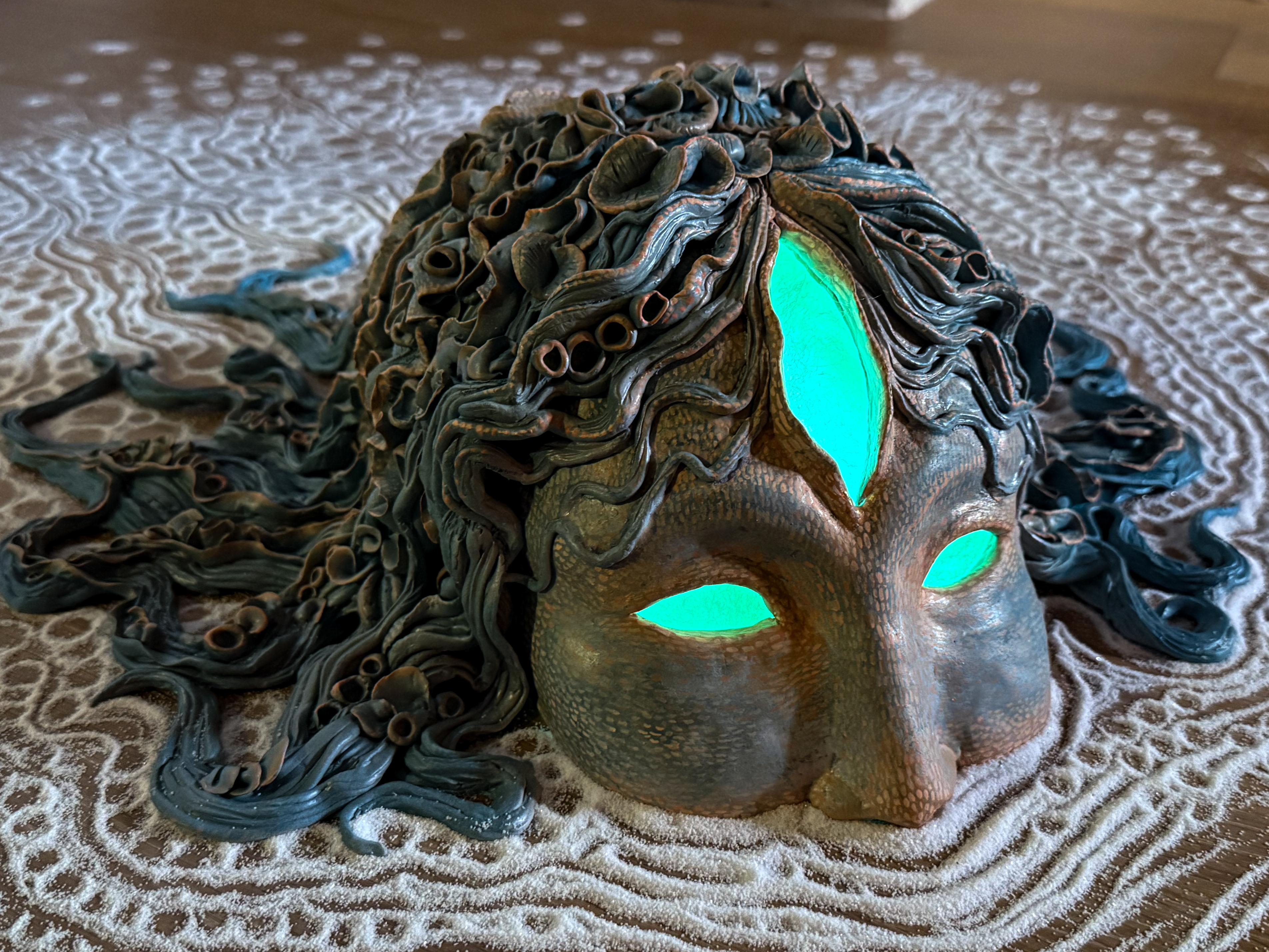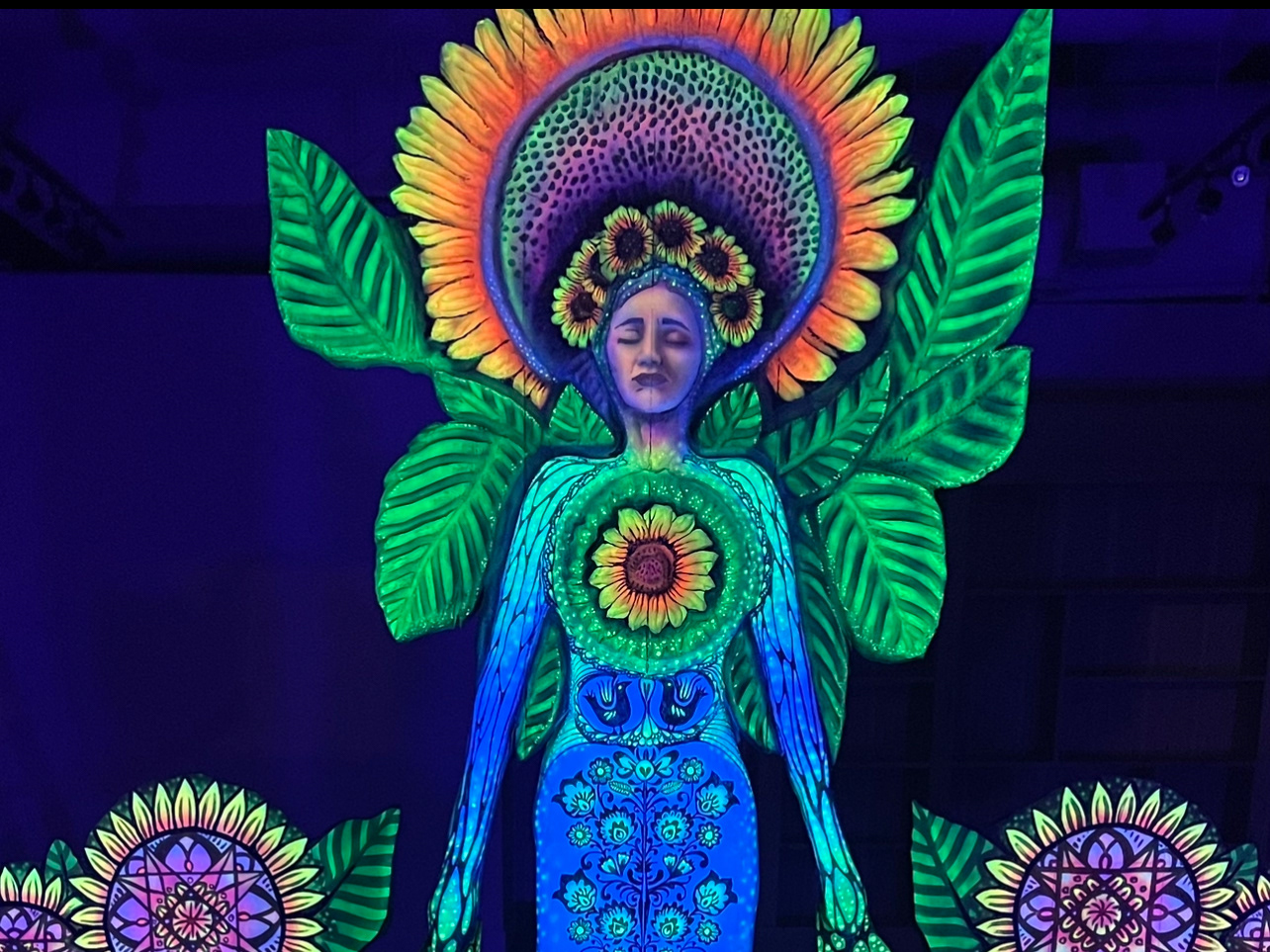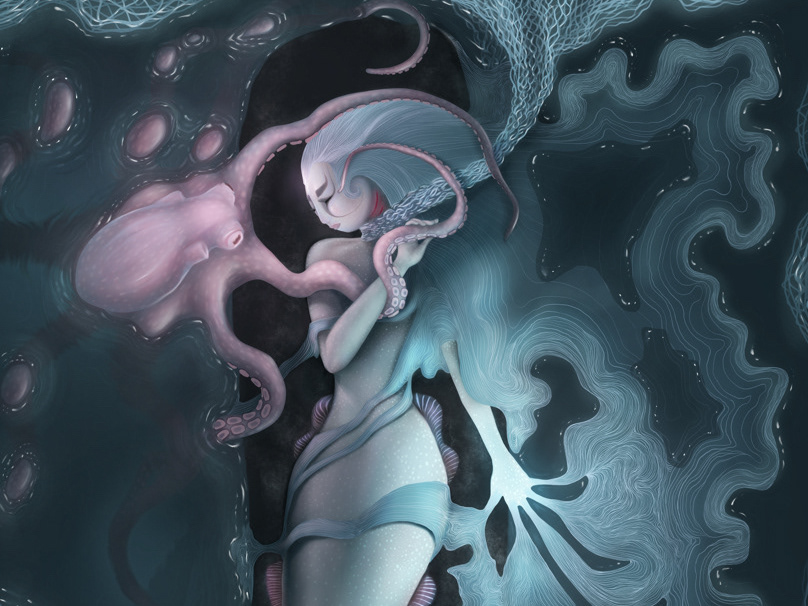Epoxy and polymer clay, recycled silver, wood, acrylic paint
This sculpture explores the sacred feminine’s relationship to sorrow, compassion, and boundaries. I was thinking of Quan Âm, Kwan Yin, the Tara, and the Virgin Mary, all embodiments of compassion born from tears. Quan Âm emerges from the tears of the Buddha and carries the emotional labor of humankind’s suffering. Tara is often shown with one foot down, always ready to help. The impulse is holy, but the expectation of it in women is not.
In this work, I imagine what happens if Quan Âm were to reclaim her selkie skin, her agency, her freedom to navigate the waters of emotion without being consumed by them. The myth of the selkie tells of women who live on land when their seal skins are hidden by men, longing for the sea but unable to return. If she got her skin back, she could move through her own sadness as power rather than burden.
The figure’s exterior is protective, wrapped in a seal-like form that shields her inner self. She offers light to others, but the skin guards her from being fully exposed. The piece meditates on the holiness of sadness and the painful necessity of boundaries for those who live with open hearts.
What happens when we stop trying to detach from suffering and instead learn to swim within it?
Esta escultura explora la relación del principio femenino sagrado con el dolor, la compasión y los límites. Pensaba en Quan Âm, Kwan Yin, Tara y la Virgen María, todas encarnaciones de la compasión nacida de las lágrimas. Quan Âm surge de las lágrimas del Buda y carga con el peso emocional del sufrimiento humano. Tara suele representarse con un pie en el suelo, siempre lista para ayudar. El impulso es sagrado, pero la expectativa de que las mujeres lo sostengan no lo es.
En esta obra imagino qué pasaría si Quan Âm recuperara su piel de foca, su agencia, su libertad para moverse por las aguas de la emoción sin ser consumida por ellas. El mito de las selkies habla de mujeres que viven en tierra cuando los hombres esconden sus pieles de foca, anhelando el mar pero sin poder regresar. Si ella recuperara su piel, podría moverse dentro de su tristeza como poder, no como carga.
El exterior de la figura es protector, envuelto en una forma semejante a una foca que resguarda su interior. Ofrece luz a los demás, pero la piel la protege de quedar completamente expuesta. La pieza medita sobre la santidad de la tristeza y la necesidad dolorosa de establecer límites para quienes viven con el corazón abierto.
¿Qué sucede cuando dejamos de intentar desprendernos del sufrimiento y aprendemos a nadar dentro de él?
